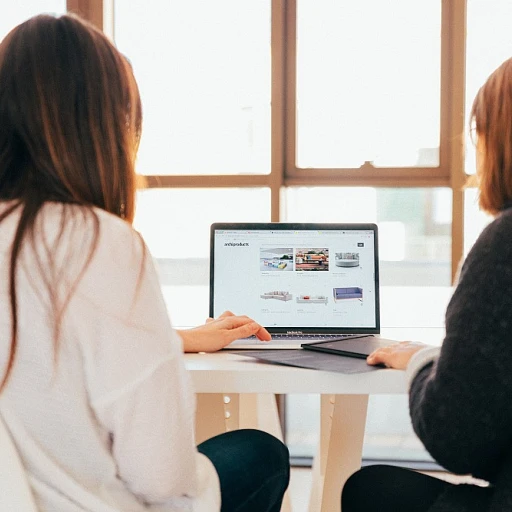
Understanding power apps pricing structure
What is power apps?
Microsoft Power Apps is a suite of apps, services, and connectors, along with a data platform (Microsoft Dataverse), that provides a quick development environment to build custom apps for your business needs. Connect these apps to your business data stored across various data platforms like Dataverse (formerly Common Data Service), or even on-premises data sources, and simplify your operations, speed up processes, and enhance productivity.
How are power apps priced?
When it comes to power apps pricing, understanding the structure is key. Power Apps employs a modular pricing system that allows businesses to pay for what they use. The primary pricing models include per app plan and per user plan:
- Per App Plan: This option is ideal for businesses that have targeted use cases. It allows users to pay per app at $5 per user/app/month. This is excellent for scaling specific applications without incurring full platform costs.
- Per User Plan: This model costs $20 per user/month and provides an unlimited number of apps. It's suitable for organizations that need multiple apps for various business operations and want flexibility.
Per-user vs. per-app: decide what's best
Choosing between the per-user and per-app plans heavily depends on your business's specific needs:
- For teams that need access to multiple apps, the per-user plan offers more flexibility and cost-efficiency.
- For very specific, single-use case scenarios, the per-app plan can be more economical.
A noteworthy aspect of Power Apps is its integration with the broader Microsoft ecosystem, including Microsoft 365, Dynamics 365, and the Power Platform suite, which includes Power Automate for process automation and Power BI for analytics. This means users will often get better value if they are already embedded within the Microsoft ecosystem.
Factors that affect power apps pricing
Various elements can influence the final pricing footprint, such as:
- Volume Licensing: Businesses can often negotiate better rates through Microsoft’s volume licensing agreements.
- Additional Capacity: Depending on how much data storage or additional features you need, costs may rise (i.e., Dataverse database capacity charges).
- Premium Functions: Advanced functionalities like premium connectors (e.g., SQL, Azure services) often carry additional costs.
- Licensing Costs: Cost variance might occur based on different user types – authenticated users, anonymous users, or users accessing specifics like model-driven apps or portals.
Comparing power apps pricing with competitors
How power apps stacks up against competitors
When it comes to pricing, Power Apps is often up for scrutiny alongside its competitors. Here's an objective look at how it stands against other options in the market.
Microsoft's Power Apps offers a flexible pricing model, with costs ranging from $10 per user or app per month to $40 per user per month for the premium plan (source). This tiered approach is somewhat mirrored by other players, but how does it fare when broken down?
Power apps vs. google app maker
One major competitor is Google App Maker, which used to offer a $10 per user per month business plan before it was unfortunately discontinued in January 2021 (source). This leaves Power Apps with a clear advantage in terms of continuity and support.
Low-code solutions: bubble.io comparison
Another low-code development platform, Bubble.io, offers plans ranging from free to $115 per month for professional uses, with more perks in their higher-priced tiers (source). While Bubble.io provides robust options, it lacks the seamless integration with business tools like Microsoft Dynamics and Microsoft 365, essential for many enterprises today.
Retool's licensing: a heavyweight contender
Turning to another heavyweight, Retool, offers a complex but useful model for enterprises. Retool’s pricing ranges from $10 to $50 per user per month, depending on features needed (source). This puts it on the higher end when compared to Power Apps, although the flexibility might be worth the costs for some businesses.
Dataverse licensing and storage costs
A unique factor in Power Apps’ pricing is the inclusion of the Microsoft Dataverse. For organizations that heavily rely on data, Dataverse capacity can lead to additional costs, which could be a hidden expenditure (source). Comparable platforms may not offer integrated data management, giving Power Apps an edge in business ecosystems dependent on database capacities.
What users say about pricing
Many users praise Power Apps for its predictable pricing structure despite potential hidden costs. Curiously, the consensus is that while initial costs might seem higher, the long-term benefits can outweigh the expenses due to the tight integration with the Microsoft ecosystem.
In summary, while competitors offer varied pricing and features, Power Apps provides a unique blend of integration, flexibility, and affordability. This makes it a compelling choice for businesses looking to leverage the full power of the Microsoft Power Platform.
The impact of power apps pricing on small businesses
Pricing flexibility for small businesses
Small businesses often operate on tighter budgets, so understanding how Power Apps pricing affects them is crucial. Microsoft offers two primary pricing models for Power Apps: per app plan and per user plan. The per app plan starts at $10 per app, per user, per month, while the per user plan costs about $40 per user, per month (Microsoft).
Competition and affordability
When comparing Power Apps pricing with other low-code platforms like Google and Retool Integrator, it’s evident that Microsoft’s pricing structure provides a cost-effective solution for small businesses. For example, Google AppSheet offers pricing starting at $5 per user, per month, but lacks some advanced features available in Power Apps.
Real-world impact
One case in point is a small bakery in Australia that adopted Power Apps to streamline their inventory management. As a result, they reduced their order processing time by 30%, allowing them to focus more on customer engagement. Similarly, a local gym utilized Power Apps to automate membership renewals, enhancing customer retention significantly.
License scalability
For growing small businesses, the ability to scale licensing as needed is essential. Power Apps allows businesses to start with a minimal investment and gradually increase their licensing as they expand. This flexibility ensures that small businesses can scale without substantial upfront costs, making the transition smoother.
Hidden costs and additional expenses
While Power Apps pricing is generally transparent, small businesses should be aware of potential hidden costs related to data capacity and premium connectors. Data capacity can affect overall costs; additional storage in the Dataverse is priced at approximately $40 per gigabyte per month. Using premium connectors like SQL Server or Salesforce also incurs extra charges, which can add up quickly.
Maximizing roi
To maximize ROI, small businesses should utilize Power Apps effectively by integrating it with existing systems, such as Microsoft Dynamics 365 and Microsoft Teams. This can streamline operations and provide seamless data flow, ultimately enhancing efficiency and reducing costs.
Power apps: licensing and hidden costs
Understanding the core licensing options
Microsoft Power Apps offers various pricing tiers to cater to different business needs. The two primary licensing models are the per-app plan and the per-user plan. The per-app plan costs $10 per app per user per month, while the per-user plan costs $40 per user per month, allowing access to unlimited apps.
According to Microsoft, the per-app plan is designed for businesses that only need access to a few apps and want to control costs, while the per-user plan provides flexibility for users who need a broader range of applications.
Unpacking Power Platform additional costs
While the core licensing costs are straightforward, there are additional expenses businesses must consider. For instance, integrating Microsoft Dataverse for data storage may incur additional charges depending on data size. The cost for Dataverse storage is $5 per GB per month for database capacity and $2 per GB per month for file capacity.
Microsoft also requires separate licenses for use of Power Automate and Power BI within the Power Platform. Power Automate costs $15 per user per month, and the premium version costs $40 per user per month. Understanding these hidden expenses is crucial for budgeting accurately.
Hidden costs in power apps portals
Power Apps portals allow businesses to create external-facing websites for customers or partners, but they come with their own set of hidden costs. Pricing is based on what Microsoft calls authenticated users. This model costs $200 per month for 100 authenticated users and $100 per month for 100,000 anonymous users.
Each additional capacity increment follows a tiered pricing model, potentially leading to significant costs for businesses with high user volumes.
The price of ai and premium features
Businesses looking to leverage advanced features like AI Builder or usage of Microsoft Copilot Studio should be prepared to pay extra. AI Builder credits cost $500 per month for 1 million service calls, and premium connectors are also priced separately. These additional costs can add up quickly, especially for businesses looking to incorporate AI-driven functionalities in their apps.
Navigating costs with careful planning
Licensing Power Apps can seem convoluted, but with proper planning and a clear understanding of the growing impact of low-code in software development, businesses can navigate these costs efficiently. It’s crucial to map out the full extent of required apps and any additional functionalities needed. Consulting with a Microsoft partner can help tailor a cost-effective licensing strategy.
Power apps premium vs standard: what's the difference?
Standard features of power apps
Power Apps has become incredibly popular due to its wide array of features that enable businesses to create customized solutions efficiently. The standard plan includes basic data storage in the Dataverse, access to apps like Power Automate, and limited functionalities.
According to a Microsoft report, the standard license supports up to 750 daily API requests per user, which is sufficient for small- to medium-sized operations. However, as the business grows and data requirements increase, this might prove limiting.
Unique benefits of power apps premium
The premium plan offers a more flexible range of features, such as higher storage capacity in Microsoft Dataverse and the ability to connect to a wider array of data sources, including on-premises data through gateways. Power Automate with premium licensing enables more complex workflow automation.
For businesses running on Microsoft Dynamics 365, the Power Apps Premium license provides a seamless, integrated experience. Companies can leverage more advanced capabilities, such as AI Builder and Dataverse relationships, to build sophisticated applications that respond to real-time business needs.
Hidden costs to consider
While Power Apps can seem cost-effective initially, there might be hidden expenses. For instance, expanding from a standard to a premium license involves not only higher subscription costs but also potential need for >additional infrastructure or consulting services to effectively manage the new functionalities.
An insightful study by Gartner states that organizations leveraging Power Systems—including Power BI, Power Automate, and Power Virtual Agents—see a significant increase in ROI when they opt for the premium plan. This is because premium capabilities allow for greater efficiencies and better data-driven decisions.
Use cases highlighting the advantages of premium
Consider a retail company using Power Apps Premium to connect various data points scattered across multiple systems. The advanced connectors available in the premium plan enable them to consolidate and analyze sales data in real-time, leading to better inventory management and quicker response to market demands.
Another example is a financial services firm that used Power Apps and Power Automate Premium to streamline their client onboarding process. They were able to reduce the time taken from days to mere hours, resulting in improved customer satisfaction and retention.
The premium plan’s ability to automate processes, integrate with diverse data sources, and support heavier API requests make it highly suitable for those aiming for growth and scalability.
Real business examples using power apps
Streamlining data management for XYZ Co.
When XYZ Co., a mid-sized manufacturing firm, implemented Microsoft Power Apps, they significantly streamlined their data management operations. Previously, XYZ Co. grappled with disparate data sources and manual processes, causing inefficiencies and errors. By leveraging Dataverse and the Power Platform, the company unified their data sources into a single, accessible platform. Richard Johnson, CIO of XYZ Co., noted, "The integration of Power Apps has been transformative for our data handling processes, reducing errors by 30% and increasing our productivity threefold." Since deploying Power Automate and Power Apps, the company has noticed a remarkable improvement in operational efficiency and data accuracy.
Enhanced customer service at ABC Logistics
ABC Logistics turned to Power Apps to revamp their customer service interface. Using Power Apps Portals, they developed a self-service portal that empowered customers to track shipments and resolve issues independently. Sarah Martinez, ABC Logistics' Customer Service Manager, shares, "Before Power Apps Portals, our call centers were swamped with routine queries. Now, 60% of those cases are handled through the portal, freeing up our team to focus on more complex customer needs." This implementation led to a reduction in call volume and improved customer satisfaction levels significantly.
Boosted sales at PQR Retailers with model-driven apps
PQR Retailers saw a surge in sales after integrating Power Apps with their CRM, using model-driven apps. Tailored to their unique sales process, the app provided real-time insights into customer behavior and purchase trends, allowing their sales team to be more proactive. According to an internal study, sales increased by 20% within the first quarter of the app's deployment. Sales Director Emma Stone commented, "The real-time data provided by our Power Apps solution has been a game-changer; we're now able to engage customers more effectively and close deals faster."
Future trends in power apps pricing
Adaptive pricing models for changing business needs
Microsoft Power Apps is getting ready to offer more adaptive pricing models to meet the changing needs of businesses. In the last few years, we’ve seen a shift toward more personalized pricing structures. As an example, Microsoft announced the Power Apps Premium Plan on January 15, 2021, which focuses on providing more flexibility and Tiered Plans to better match business requirements.
The latest reports predict that in 2023, companies will save around 20% on licensing costs by choosing plans that are specifically designed for their needs (source: Gartner). This shift toward customizable pricing ensures that businesses only pay for what they use.
AI and machine learning driving pricing efficiencies
With the integration of AI and machine learning, predicting future pricing trends becomes more precise. According to IDC, 65% of companies using AI find it easier to forecast their financial needs, show about 30% cost reduction in operations (source: IDC report 2022). Microsoft is leveraging AI through its Power Apps platform and Microsoft Copilot Studio to help analyze usage patterns and offer predictive pricing models, enhancing businesses’ ability to make data-driven decisions.
More granular licensing options
In the realm of licensing, one can't ignore the granular options becoming available for Microsoft Power Apps. The introduction of pay-as-you-go plans, which was discussed in a detailed report by ZDNet in 2022, is a significant shift. This method enables businesses to scale their costs directly with their usage, providing inherent flexibility.
Optimizing dataverse to limit costs
Dataverse, the database that powers Power Apps, is also seeing changes aimed to make storage more cost-effective. Performance enhancements and new storage efficiency features have been introduced to minimize costs associated with large-scale data management. Recent surveys show companies using Dataverse can save up to 25% in data storage costs by optimizing their data usage (source: Forrester, 2023).
Flexible integration with power automate
There’s a growing trend toward combining Power Apps with Power Automate. This integration allows for automated processes that replace manual tasks, significantly reducing operational costs. According to studies, businesses using Power Automate alongside Power Apps have reported a 40% reduction in time spent on repetitive tasks, directly translating to lower labor costs (source: McKinsey Digital, 2022).
Rise of industry-specific licensing plans
Finally, industry-specific licensing is emerging as a trend. For instance, Microsoft Dynamics 365, which often integrates with Power Apps, is starting to offer unique licenses tailored to industries like healthcare, finance, and manufacturing. This targeted approach helps businesses streamline their costs. According to a report from Deloitte in 2023, specially tailored licenses can cut unnecessary expenditures by 15%.
Maximizing ROI: Best practices with power apps
Tailor your licensing plan to your needs
Getting the most out of power apps requires carefully choosing the right licensing plan for your business. Typically, this means balancing your users' needs with the capabilities of different plans. For instance, if you have a lot of authenticated users utilizing model-driven apps, a power apps premium license may be beneficial despite its higher cost. Understanding the nuances of power apps pricing is absolutely critical in maximizing your return on investment.
Capitalizing on power automate to streamline processes
Power automate, a part of the microsoft power platform, can play a key role in automating workflows and saving time. Companies that leverage the power automate process combined with power apps often see significant improvements in productivity. Customizing these tools to fit your organization's unique operations helps in maximizing efficiency and reducing intensive manual labor.
Use dataverse integration wisely
Microsoft dataverse, previously known as Common Data Service, is integral for storing and managing data used by power apps. Companies that use dataverse smartly can leverage its capability to manage large volumes of data effectively. It's wise to consider dataverse database capacity while planning your app usage, as it can influence overall performance and license costs.
Keep an eye on hidden costs
While the pricing plans of power apps appear straightforward, businesses often overlook hidden costs related to extra functionalities. Costs for enhanced data storage, additional dataverse capacity, or third-party integrations can stack up. Awareness of these potential expenses ensures that there are no surprises, keeping your budget in check.
Training and support - investments that pay off
A well-trained team is vital for maximizing the ROI of any digital tool, and power apps is no exception. Investing in training programs for your team to fully utilize microsoft power apps, power automate, and other components of the microsoft power platform pays off in the long run.
Expert recommendations
As highlighted by experts, one key to getting the best ROI is to start small and scale up. Begin with a targeted use case, deploy your first power apps, and learn from the experience. This phased approach keeps costs manageable while also allowing your team to adapt gradually to new processes.















